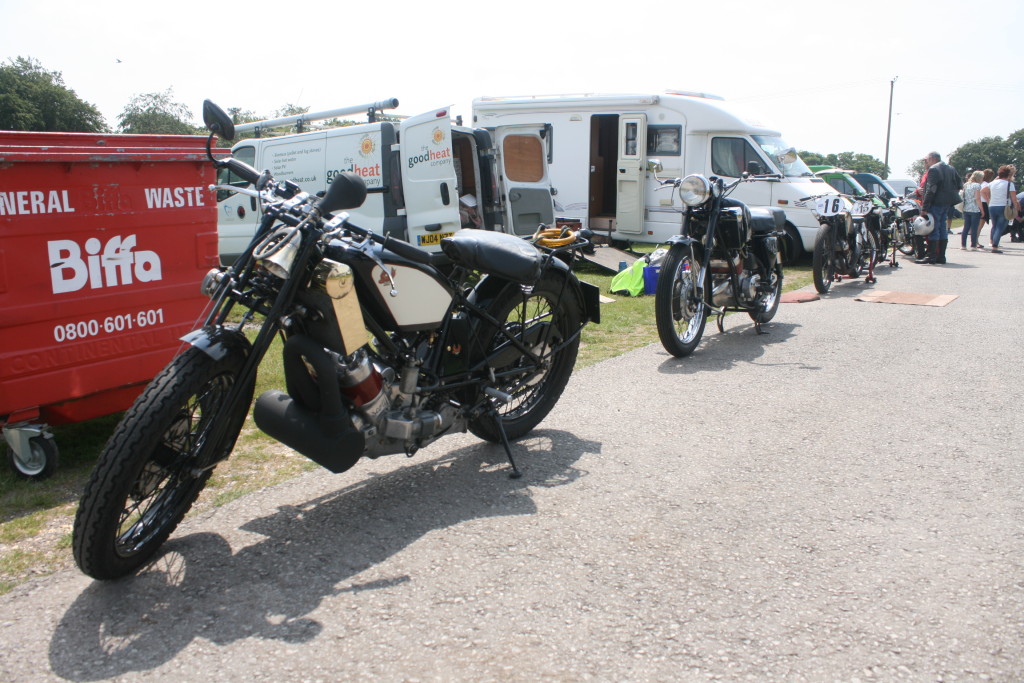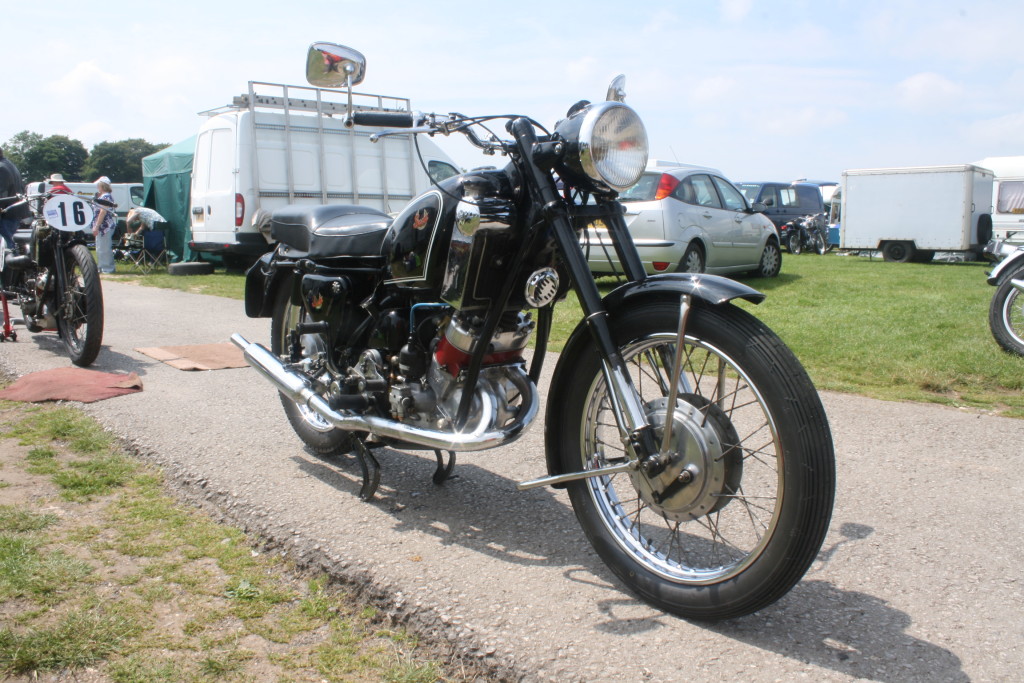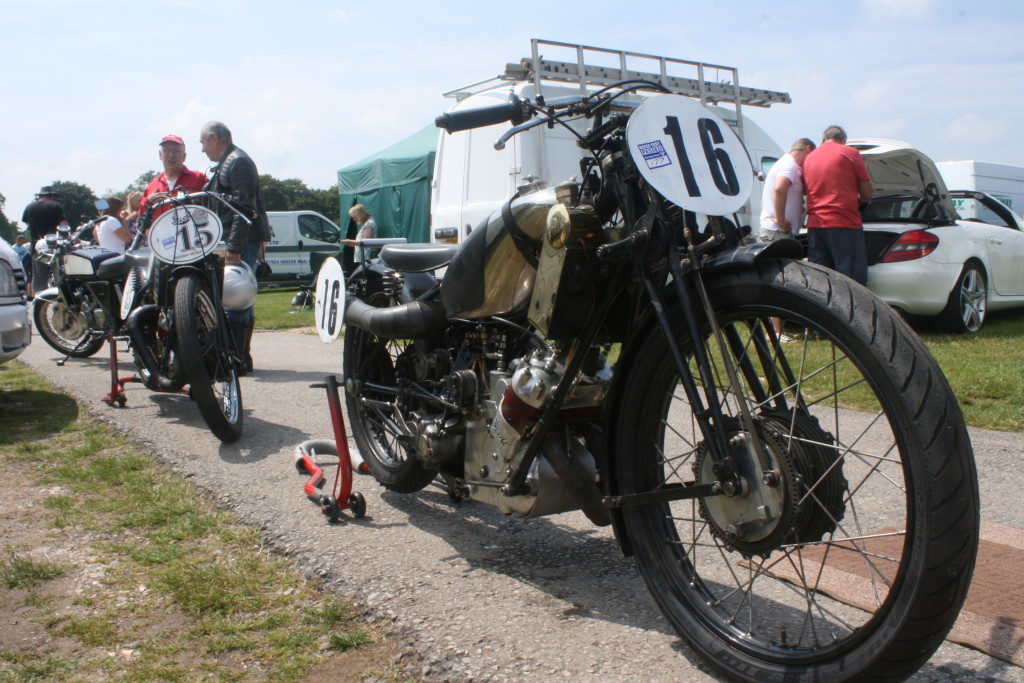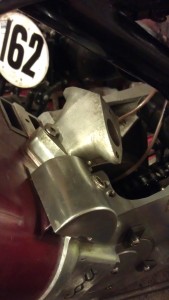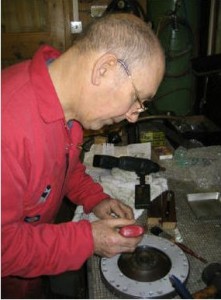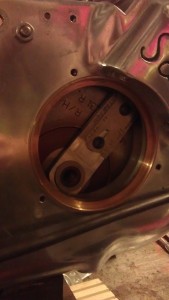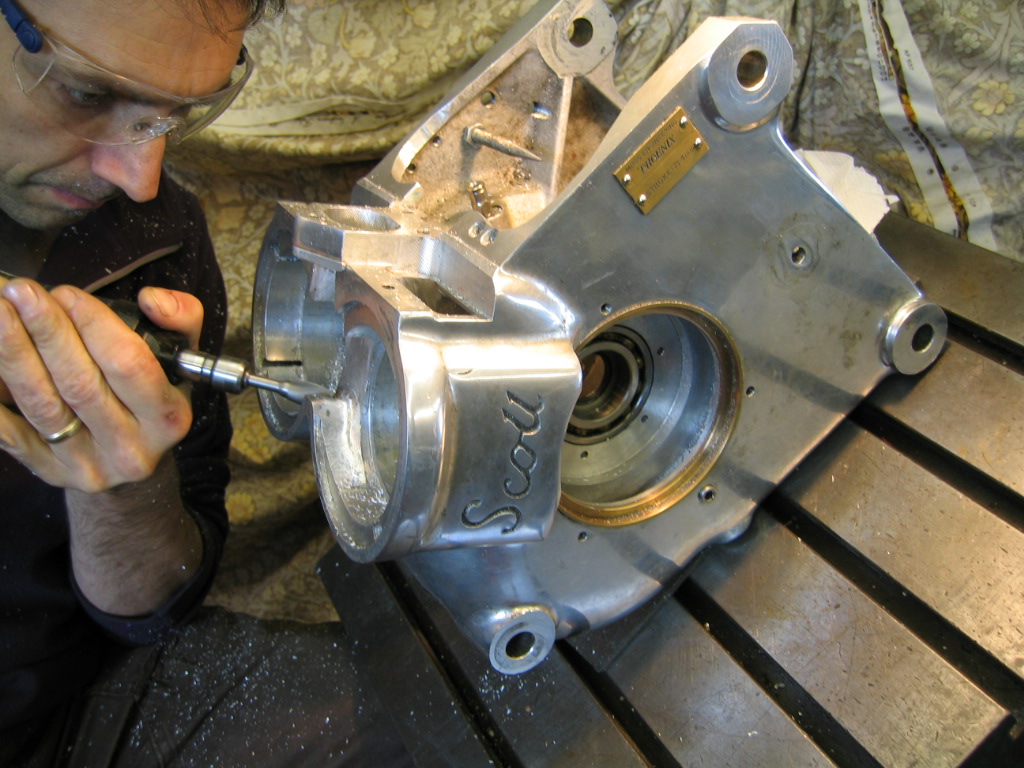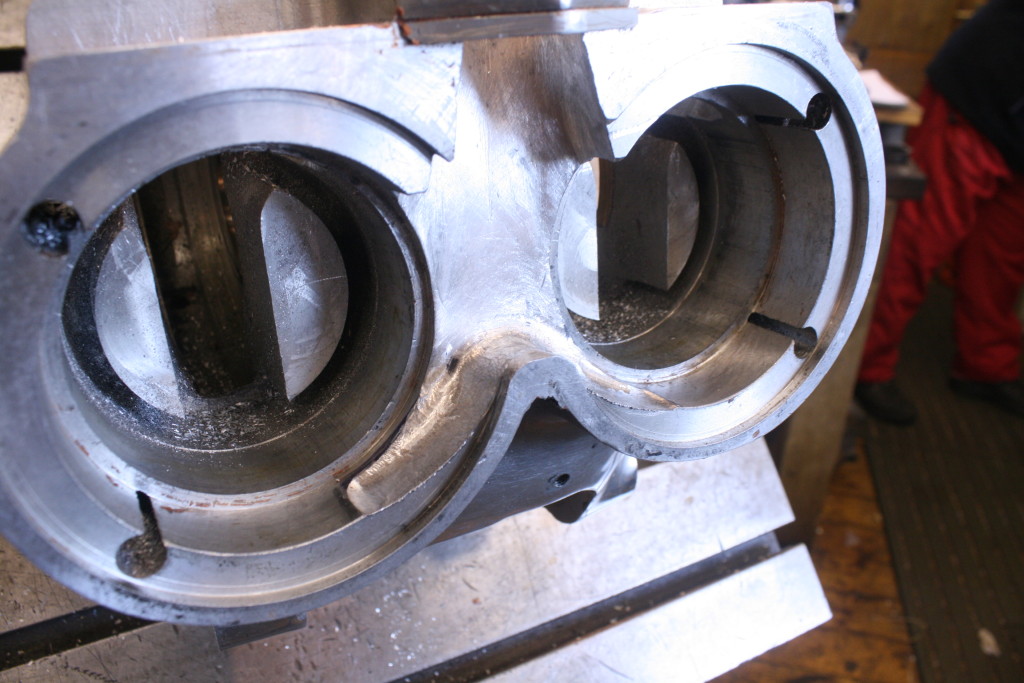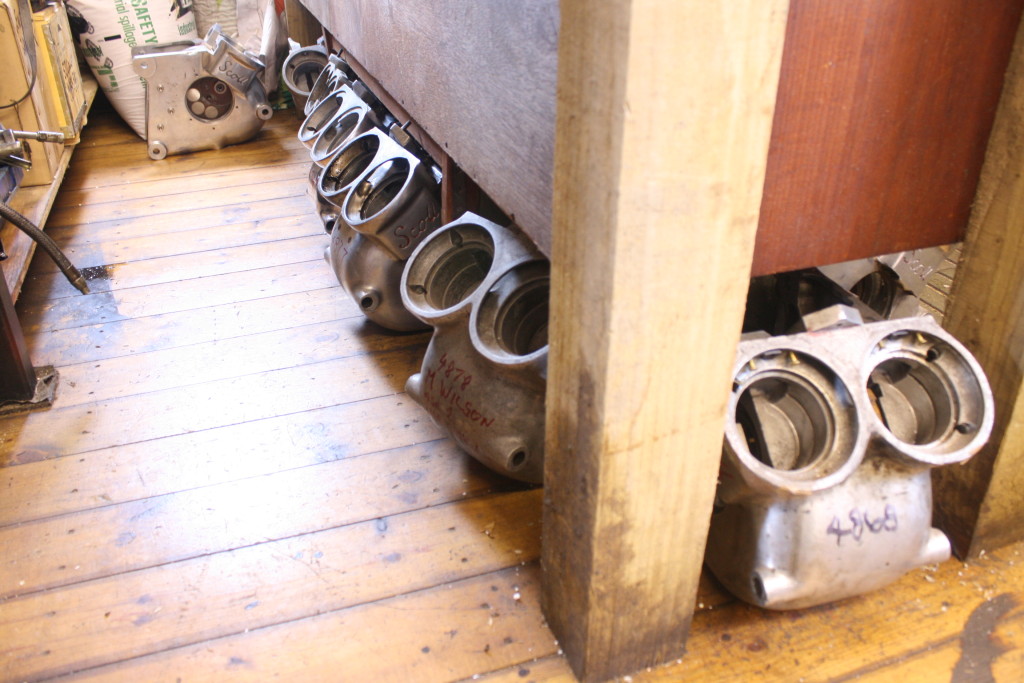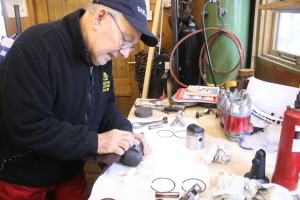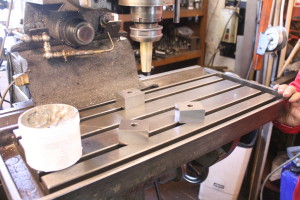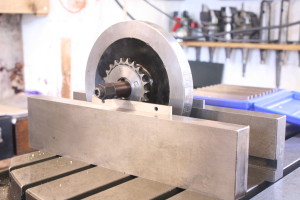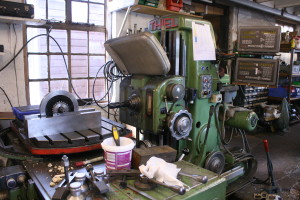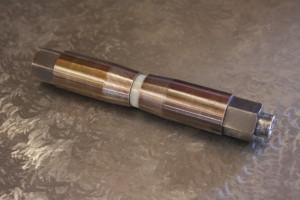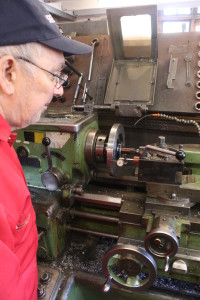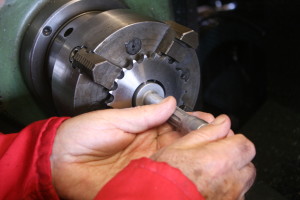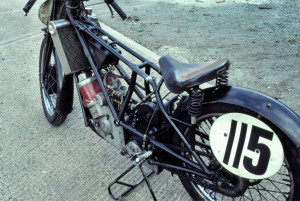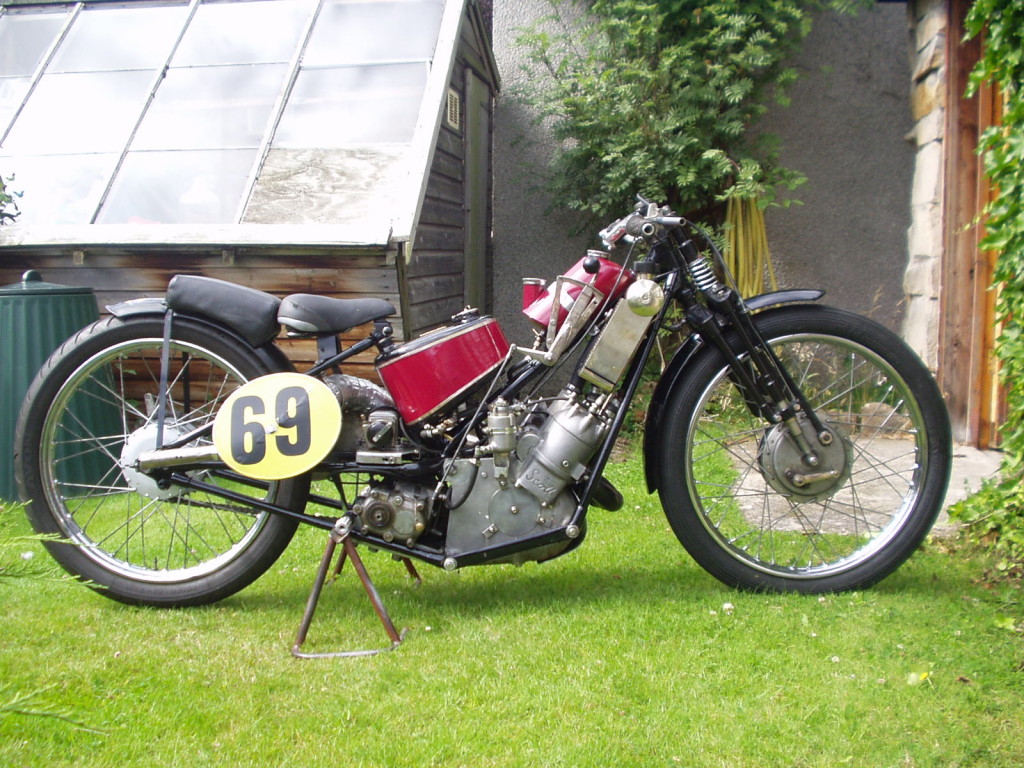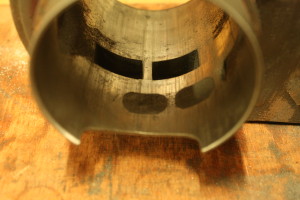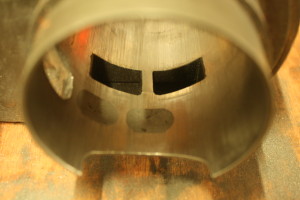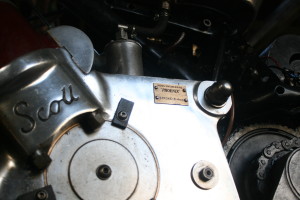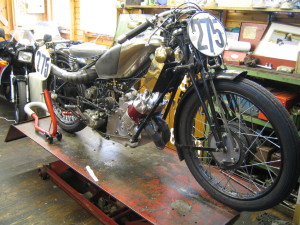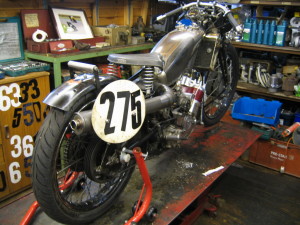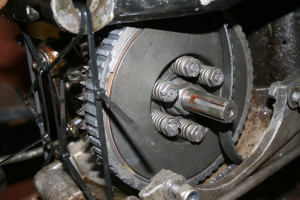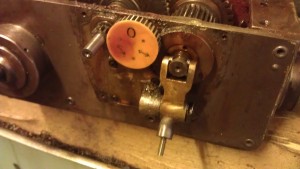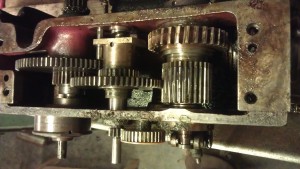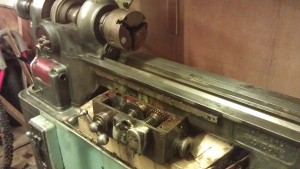Well, I tried to get the twin carb manifold completed before Beezumph 23, on the 12th July but it was not to be and I was glad that I’d made the decision to leave intact the entire single carb assembly, fuel lines and all, just in case I needed to put it back. It was a close run thing and I actually still hadn’t finished the bike when it went in the back of the van but in fact retaining the single carburettor gave me the opportunity to assess the changes I’d made on the engine with more certainty as to what had affected what.
Just to re-cap, the Beezumph is not a race meeting but a track day organised by the vibrant Trident and Rocket 3 Owners club, many of whose members bring their machines out for this spirited social occasion. I first went in 2001, I think, and Roger a couple of years before that. I think it was his first return with the Scott to the track after some years of working hard to build his workshop and business. I believe that first time he attended he was awarded the ‘man of the meeting’ award by Doug Hele after having caused great amusement having repeatedly passed very much more modern bikes invariably by diving up the inside of them into corners.
I got up early as I still needed to finish a few details. Rear chain tension and corresponding alignment of the rear wheel needed to done, followed by the wiring of the rear brake torque arms and wheel nuts. A good check over and then put the kettle on for the morning coffee.
The fog that had descended on Cadwell park the previous evening lingered for a while in the morning lending it a brigadoon-esque feeling of a world apart which I’ve always felt Cadwell somehow symbolised anyway. You can be a hero just for one day at a race meeting, away from normal sensible life, normally in battling to fix things in adverse conditions. Two years running I worked ’til two in the morning at the last vintage Cadwell meeting, stripping and rebuilding a jammed Scott clutch (having three gears is hard on a clutch). I’ve ridden hundreds of miles to fetch a replacement component to fit overnight. We fixed a hole punched through Rogers crankcase by a fallen transfer cover bolt with epoxy and underpants so that Paul Dobbs could continue to race the same day. It’s still the same today.
So the fog delayed a little the start of proceedings but when it did finally lift, it revealed a beautiful day which was at times almost too hot in racing leathers.
In short it was perfect.
Beezumph has become a family favourite, and until very recently (Babies have arrived) there were regularly several of us making an event of it. As it was, three Scotts and their owners turned up to support us and it made a very fine line up in the paddock. Richard Rawson and his fine Silk Scott and friend on his very nice Birmingham Scott, and then Alan Noakes on his beautifully detailed, girder forked, Flying Squirrel.
I hadn’t mixed my fuel and so set to work with the ingredients. The engine had not appeared to have enjoyed a surplus of oil in the bores from my inspections after the previous season and so I’d decided to reduce the acetone percentage in the mix in case this was simply stripping the lubrication out. Acetone is one of the things that came up in my research when I was looking at running on methanol and my understanding is that it’s used to help combat pre-ignition in leaner fuel mixtures and possibly aid starting. I had decided on a 5% Castrol M, 10% acetone and 85% Methanol mix previously but this weekend I reduced that to 5% Acetone to see whether that made a difference.
Not having even run the engine since I started working on it at the end of last year, I was glad to have an offer to use someones starting rollers.
With the drippers set high feeding Castrol R through the non return valves direct to the main bearings she turned over for a few seconds before gradually starting to fire. A tell tale hanging of mist in front of the carb opening showed the effect of the extra inlet duration I had applied. I expected that that would only be present at lower revs, but we would see. When cold she always carburates poorly and there’s a significant lag on the throttle as if the cable has a length of elastic in it. After the engine warms up, she’s immediately responsive. Methanol simply runs so cold that when the engine is also cold the atomisation seems to be quite poor. That’s what I imagine anyway.
So up and down the pit road a couple of times and then out in our session.
The beezumph has different categories and they range from beginner (marshall led laps) follwed by classic, fast classic, open (any age of bike) and then expert classic. We go in expert or equivalent normally simply because you can get problems with people being unused to being passed around a corner in other classes. Last year in fact, Roger decided to go in the fast classic group thinking that class more appropriate. He was 72 and on a 1934 bike and so thought he’d give it a try. He found, as is often the case, that he was being passed down the straight by more modern, faster bikes which then proceeded to brake very early where a corner was approached. Thinking that they may be stopping to attend to natures call or maybe a sandwich, he would pass them. Some take seeing a pensioner riding a vintage girder forked bike up the inside of you at a ridiculous angle of lean with great humour and enthusiasm, but not all. Roger would invariably pass, undoubtedly at a significantly higher (if not warp) speed, until their desire to storm by on the straight was diminished by a growing sense of futility in the action. There-after some are merely crest fallen, whilst for the special few indignance steps in to protect a fragile self esteem..
One rider was so affected by this (whether through genuine fear or critically injured vanity it’s not known) that he complained and Roger was informed that if he wasn’t able to pass on the straights then he should not pass.
This year he returned to the self appointed experts class, where passing on corners is in fact expected.
The first session out, I was obviously quite sensitive to the engine’s character as much work had been done since last season. It seemed to me to have less torque low down and be therefore slightly less drivable out of the corners. However, the engine seemed to be be pulling longer through the revs and although the majority of bikes (750 Tridents and Rocket 3’s) were easily faster down the straight, it wasn’t the difference I would have thought. I thought I felt the engine tighten a couple of times (though I might have been over sensitive) so I took it relatively steady.
I raised the needle before going out the second time and was not to feel any hesitation again. I kept behind Roger for a couple of laps to get a comparison between his and mine and he thinks that I have about 2 or 3 mph on him on the straight. maybe 5. It’s doesn’t feel quicker than last year in the way it delivers power, but I think that actually I’ve made it breathe so much better that it’s simply getting more in at higher revs and therefore revving longer. Extra vibration has come with this, but we’re going to slug the bars with tungsten heavy metal to help here. Although my dyno tests last year are compromised by the fact that I’d blown a head gasket, I think the torque curve will be broadly representative and a comparison will show me what has actually happened. I look forward to getting it on there and will not change to the twin carbs before I’ve tested with the single. I’ll then swap the carbs before going back for another test. It’s going to be interesting.
So in the end, the bike was flying and little was able to get past and stay past. True, it’s a track day and not everyone is wanting to ‘ride it like they stole it’ though some are. It’s easy to walk away from a track day thinking that the bike is a rocket and that you are riding at the edge of human ability then go to a vintage racing meeting and get lost in the wake of serious riders on seriously developed machines. Saying that, mine is a seriously developed machine. By the time I get to the last vintage Cadwell it will have been my only race meeting this year. Family and work commitments coupled with a realistic budget have prevented me from attending more, but not in idle have we stayed away and I am hoping that when we do turn up to the last Cadwell at the end of September that we are able to move further toward the front of the field than we have before.
I’ve never won at Cadwell, and whilst I do all this for so many reasons beyond achieving a position in a race; this is what drives my desire to develop of course. To win, one day on my Scott Super Squirrel against good men on good bikes at full circuit Cadwell park. Of course it’s a folly, but what a grand folly!
